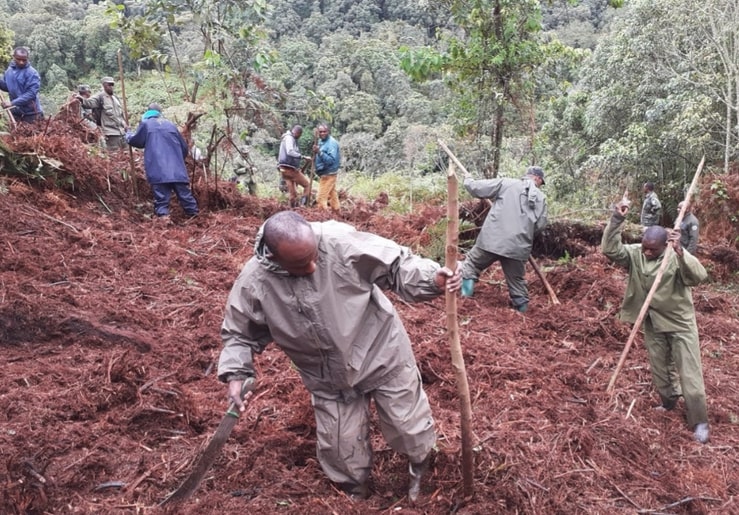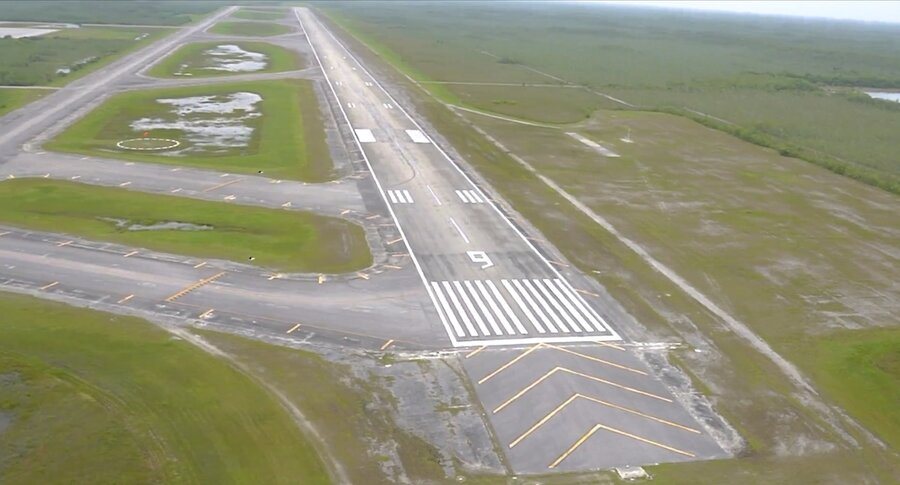Now Reading: Studies on Where Forests Are and Where They Can Be Added
-
01
Studies on Where Forests Are and Where They Can Be Added
Studies on Where Forests Are and Where They Can Be Added

Millions of hectares of old-growth forest disappearing every year, along with tens of thousands of forest species, scientists are calling for a greater emphasis on forest regeneration, in which natural forests are allowed or encouraged to recover under their own steam, for the benefit of ecosystems, communities and the climate.
Forest regeneration can be a low-cost solution to mitigate climate change, and mapping its extent can support global goals such as the Bonn Challenge, which set a goal to put 350 million hectares of degraded forests and landscapes into restoration by 2030. This study combined multiple remote sensing datasets and expert surveys, identifying million hectares of likely regenerated forests between 2000 and 2015 across areas that were not forested before 2000 and have remained forested from 2015 to 2018. The identified forest regeneration could potentially represent 22–25 billion young trees and a total biomass of about 3.2 billion tonnes. Forest regeneration took place in sites with less opportunity cost for agriculture for every country, but in more developed regions, forest regeneration took place in sites with higher suitability for cultivation. Expert feedback associated agricultural land use transitions and the establishment of protected areas, coupled with effective management and local support, as the key factors leading to successful forest regeneration. The results, publicly available, can facilitate discussions and help identify strategic locations to foster forest regeneration to achieve the global goals of mitigating climate change and restoring biodiversity.
Journal Science – The global tree restoration potential Researchers from the Crowther Lab at ETH Zurich used nearly 80,000 images from around the world to map potential reforestation areas. The 2019 study published in the journal Science by researchers at ETH Zurich identified 900 million hectares of land globally suitable for tree restoration, potentially capturing two-thirds of human-made carbon emission.
Stopping the destruction of forest would be a guaranteed way to stop reducing the CO2 storage in trees (about 350 million hectares over 20 years has been lost). Forest regeneration is cheaper and faster to fix and bring back a lot of CO2 storage. Forests that can restored are the easiest way to reverse recently destroyed forest (50-200 million hectares). Planting at large scale can work but more effort and care is needed (900 million hectares).
About 5 billion hectares are used for farming. Increasing the efficiency of farming by 60% would allow 2 billion hectares to be converted to tree growth for the purpose of storing CO2. Combined the different areas of land that have been mapped in detail via satellite and image analysis shows 650+ billion tons of CO2 could be sequestered. 8X more than all of the climate change projects that already had over $6 trillion of spending. Cutting down some of those trees, stacking the wood and planting new trees would allow more carbon to be stored.
If we stacked wood into a solid Great Pyramid of Khufu, then this would be 1.5 million tons of wood. This would be a square 230 meters per side and 147 meters tall. 40,000 new wood pyramids would be 60 billion tons and this would be about a full year of CO2.
A great wood wall, 9000 kilometers long, 5 meters wide and 7.5 meters tall would be about 200 million tons. If this was 1000 times wider and 20 times taller, this would be 4000 billion tons. This would be about 80 years of CO2.
Considering automation and fast-growing trees, the annual cost to maintain 600 billion tons of standing wood and harvest/stack 60 billion tons per year is approximately $600 billion per year, with an initial investment of $6 trillion to establish the forest. The annual figure reflects ongoing operations once established, fitting the query’s focus on cost with minimal complexity. The cost is approximately $600 billion per year. This would be a complete solution for global CO2 removal for less than what is already being spent globally on climate change projects that are less than 10% as effective.
The world had 6 trillion trees a few centuries ago. The world now has about 3 trillion trees. Adding back a few trillion trees is very doable and at far lower cost than $6+ trillion spent over the last few decades on climate projects that may have averted a total of about 80 billion tons of CO2.
Other plants can be chosen for different areas besides trees. Bamboo could be used in some areas. Each hectare could have an analysis of what is the best plants that could be grown based upon water and other conditions. The goal would be grow things cheaply and cheaply have things to use or set aside that hold carbon.
Switchgrass, miscanthus, and hemp are better than trees for growing on marginal lands due to their adaptability, rapid growth, and high annual biomass yields (7.5–18.5 tons/ha, sequestering 13.5–33.3 tons CO2/ha/year). They outperform trees in CO2 uptake rate on poor soils. However, achieving a total cost under $10 per ton of CO2 ($18/ton biomass) for growing, harvesting, and storing is challenging with current methods. Biochar production is promising for stable, low-fire-hazard storage, but costs hover around $16/ton CO2, slightly above target. Innovations in low-cost harvesting (e.g., mechanization on cheap marginal land) and storage (e.g., on-site burial or optimized biochar) could bridge this gap. Thus, while these plants excel over trees for this purpose, meeting the stringent cost and safety criteria may require further technological or contextual advancements.
The potential for global forest cover
The restoration of forested land at a global scale could help capture atmospheric carbon and mitigate climate change. Bastin et al. used direct measurements of forest cover to generate a model of forest restoration potential across the globe (see the Perspective by Chazdon and Brancalion). Their spatially explicit maps show how much additional tree cover could exist outside of existing forests and agricultural and urban land. Ecosystems could support an additional 0.9 billion hectares of continuous forest. This would represent a greater than 25% increase in forested area, including more than 200 gigatonnes of additional carbon at maturity.Such a change has the potential to store an equivalent of 25% of the current atmospheric carbon pool.
Answering this challenge, in 2018 Trillion Trees commissioned a pioneering mapping survey, led by partner WWF, to find out where regeneration is already happening, and why.
Natural regeneration is a low-cost, low-tech and high-impact strategy for restoring forests, sequestering carbon, and conserving biodiversity.”
— R. Crouzeilles et al. 2020

Back in January 2021, WWF published its latest Deforestation Fronts report, identifying 24 areas worldwide where forests are suffering the severest losses. In these areas alone, an area twice the size of the UK was lost between 2004 and 2017, and annual figures remain alarmingly high. This new study hopes to offer a counterpoint: a map of Regeneration Hotspots, where natural forests are beginning to recover.

Globally, we are still losing forests at a terrifying rate, much faster than we are able to plant or restore them. Studies have shown that between 2001 and 2019 – a similar time-period to the Trillion Trees study – 386 million hectares of tree cover were lost worldwide. That’s over seven times the area of naturally regenerated forest identified in our research. It is a global imperative to shift from a deforestation economy to a regeneration economy, supporting biodiversity, a stable climate and thriving communities.
On the scale of forest regeneration and carbon sequestration
In comparison with the FRA estimates, where 150 million ha of forest were reported as recovered between 2000 and 2015, this estimate of 55.7 million ha is a much lower figure. However, this study results are complementary to the estimate of the FAO and not suitable for direct comparison, as the FAO estimate was based on national land use reports while this estimate was based on land cover data. The recovered forest that countries reported could be too young to be detected by remote sensing and the exclusion of the areas that were forested from 1990 to 1999 likely resulted in the lower estimate in our study. Similarly, our estimates were smaller than those of Fagan et al, but they fell within the range of uncertainties. The smaller values are likely due to our study having a longer time frame, a higher canopy cover threshold in defining forest (Fagan et al 2022 used 10% as the threshold), and more restrictions on the prior land cover. Our estimate could be considered as conservative because for an area to be identified, at least two remote sensing datasets were needed to support each and all of the criteria stated above. Such an approach was used to balance the need of minimising false positives, while providing information that can be used for large-scale planning.

Brian Wang is a Futurist Thought Leader and a popular Science blogger with 1 million readers per month. His blog Nextbigfuture.com is ranked #1 Science News Blog. It covers many disruptive technology and trends including Space, Robotics, Artificial Intelligence, Medicine, Anti-aging Biotechnology, and Nanotechnology.
Known for identifying cutting edge technologies, he is currently a Co-Founder of a startup and fundraiser for high potential early-stage companies. He is the Head of Research for Allocations for deep technology investments and an Angel Investor at Space Angels.
A frequent speaker at corporations, he has been a TEDx speaker, a Singularity University speaker and guest at numerous interviews for radio and podcasts. He is open to public speaking and advising engagements.























